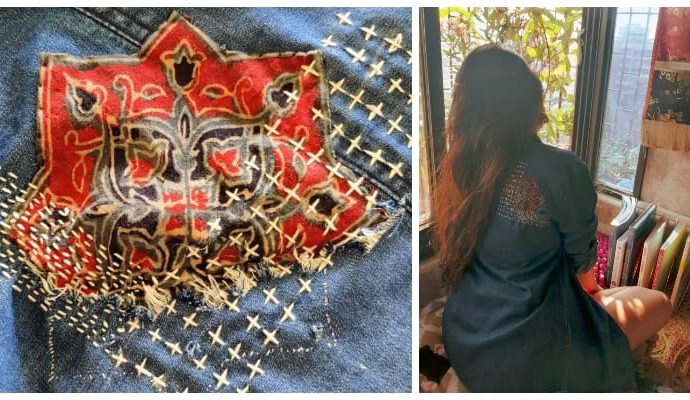Some DIY: Sashiko, a Japanese upcycling craft tradition, blended with appliqué from Ajrakh, an Indian handblock printed textile!
I always skip the long-winded introductions when I’m reading a process tutorial, so I’m going to get right into it now that I’m writing one. This is some sashiko mending on a denim shirt with a twist – incorporating a patch that peeks out of a rip in the denim. I chose an Ajrakh hand block printed motif for my patch, you could get creative and choose absolutely anything.
- The cutout is an eight point Ajrakh motif from a fabric that is hand block printed. Alongside, a sketch of how I wanted the composition to look like i.e where my sashiko stitches will be, where the denim will be ripped and how much patch will peek out (this isn’t necessary, I just enjoy the pre-planning and drawing. You can always go with the flow and build it as you go if you’re not a drawing person). I do recommend a quick sketch plan beforehand.
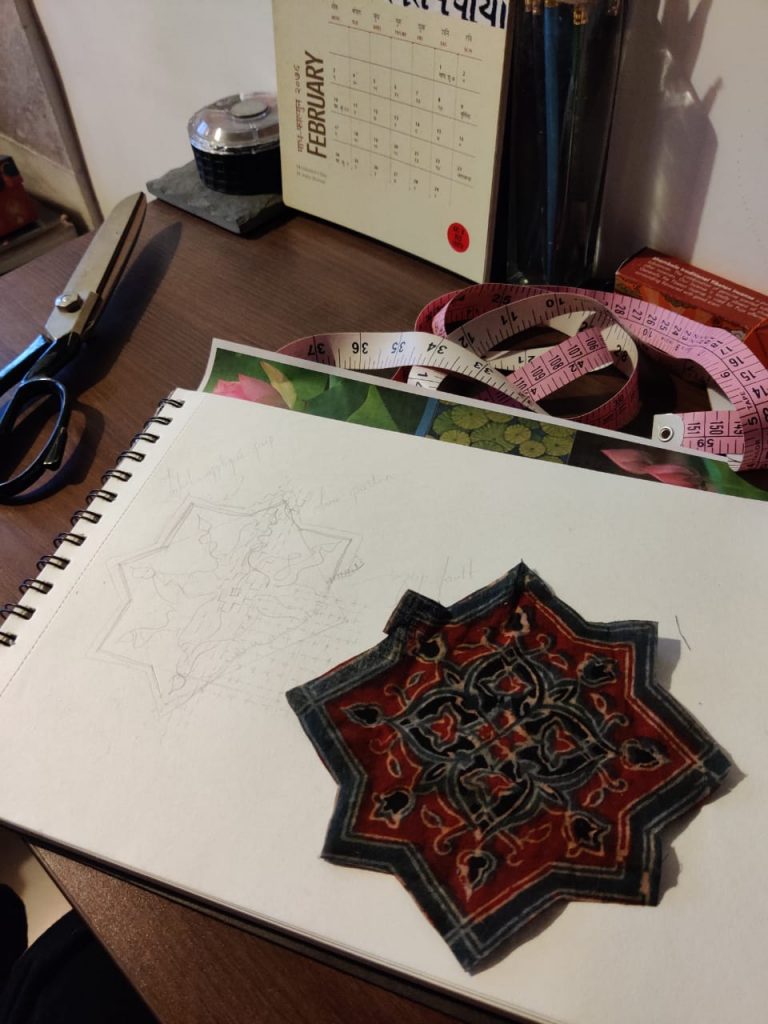
- To neatly fold in the edges, I made tiny snips at every corner until the point where my snip touched the red inner shape, and then I folded in. This is a typical appliqué technique to fold a shape with sharp corners, the little cuts make it easier. The folded edges were ironed for neatness!
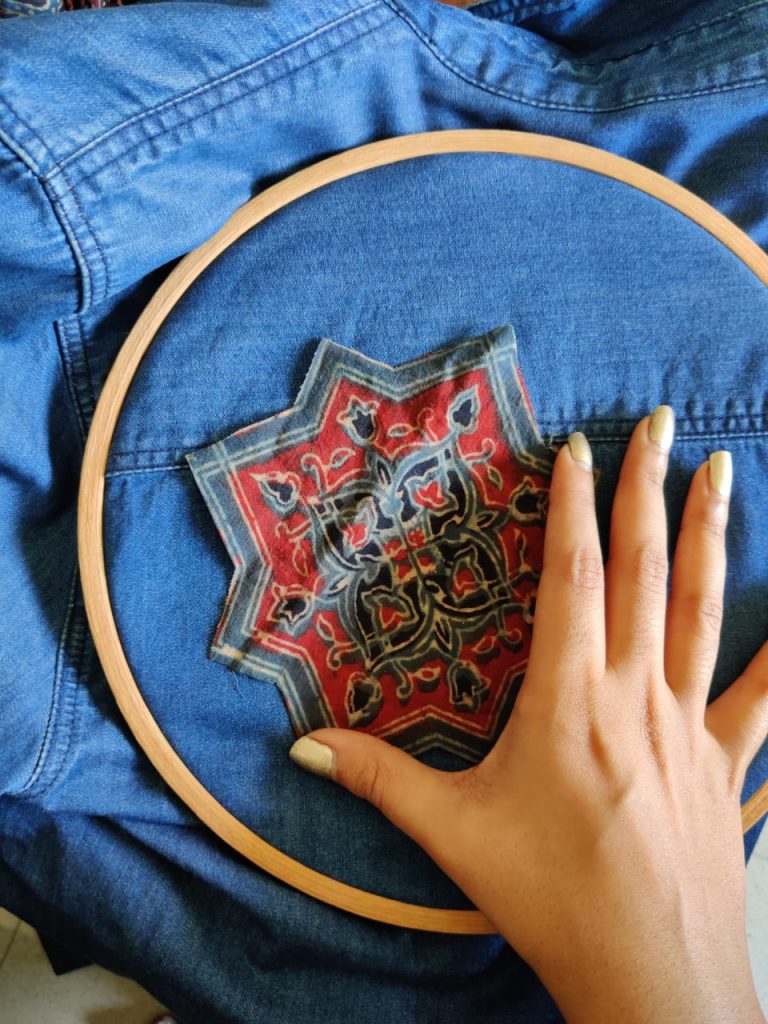
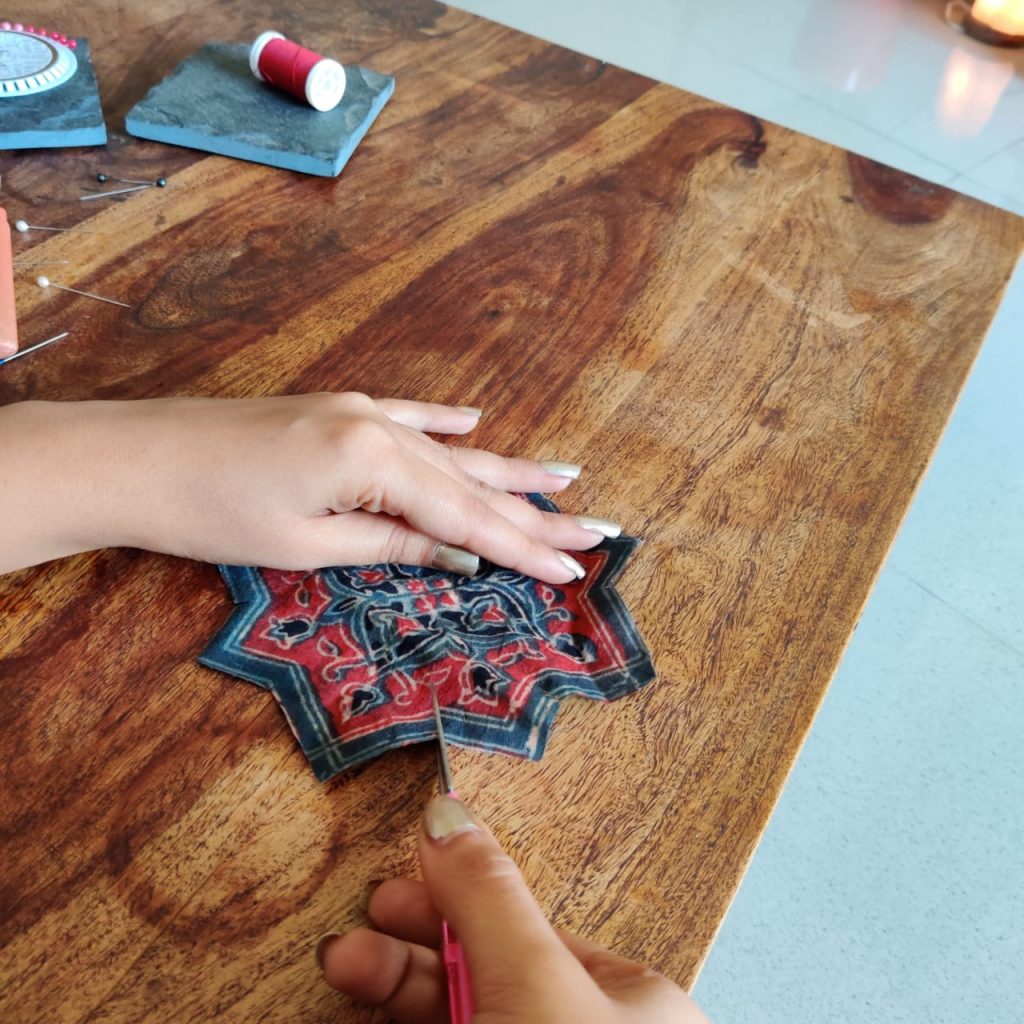
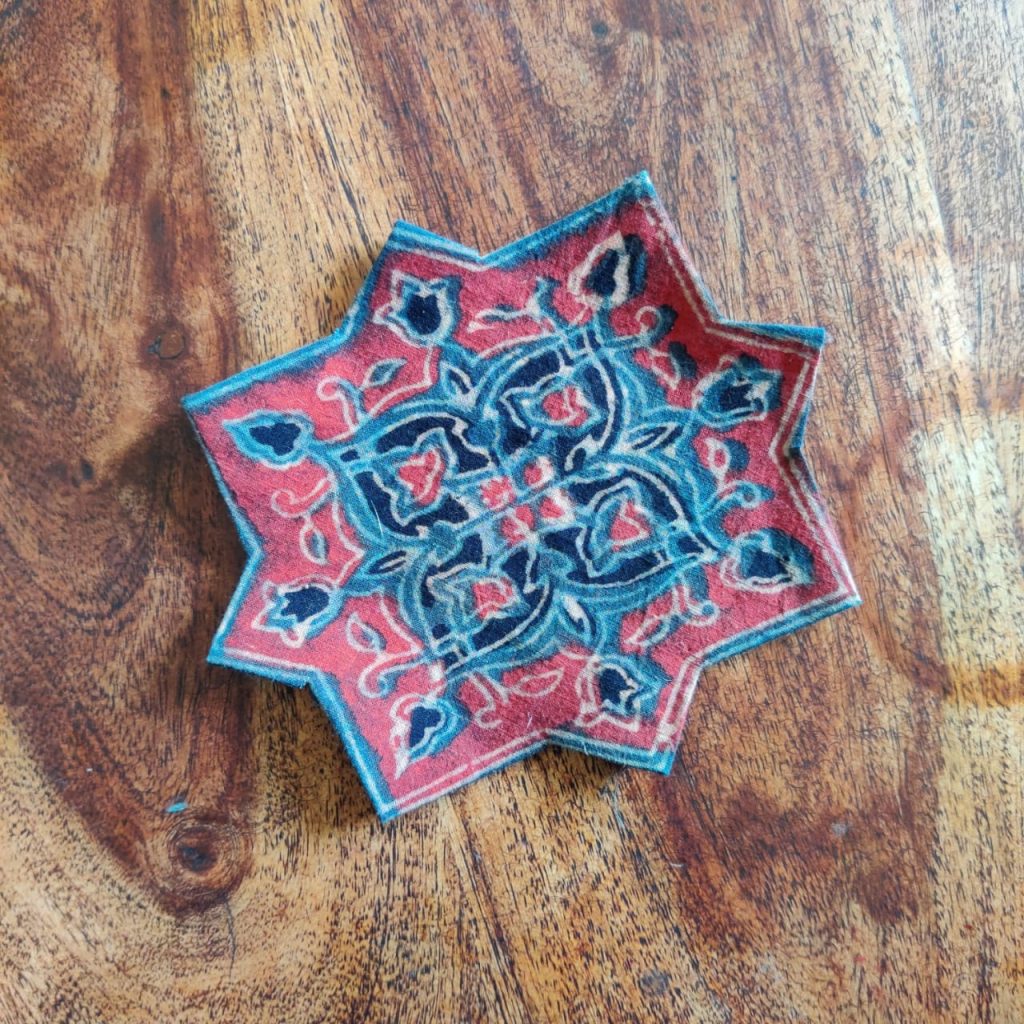
- I deliberately made a rip in this shirt (yes, cheat) as per the width of my patch. There’s no exacting calculations required, I just placed it on the shirt, marked two points from where to where I wanted my rip to be and made a cut – this is where drawing beforehand helped, for I already had an idea of how I want my rip to look like and how much of the patch I want peeking out! I accidentally also snipped the front of the shirt while doing this, so some more Sashiko shall happen there. Be mindful if you don’t want that.
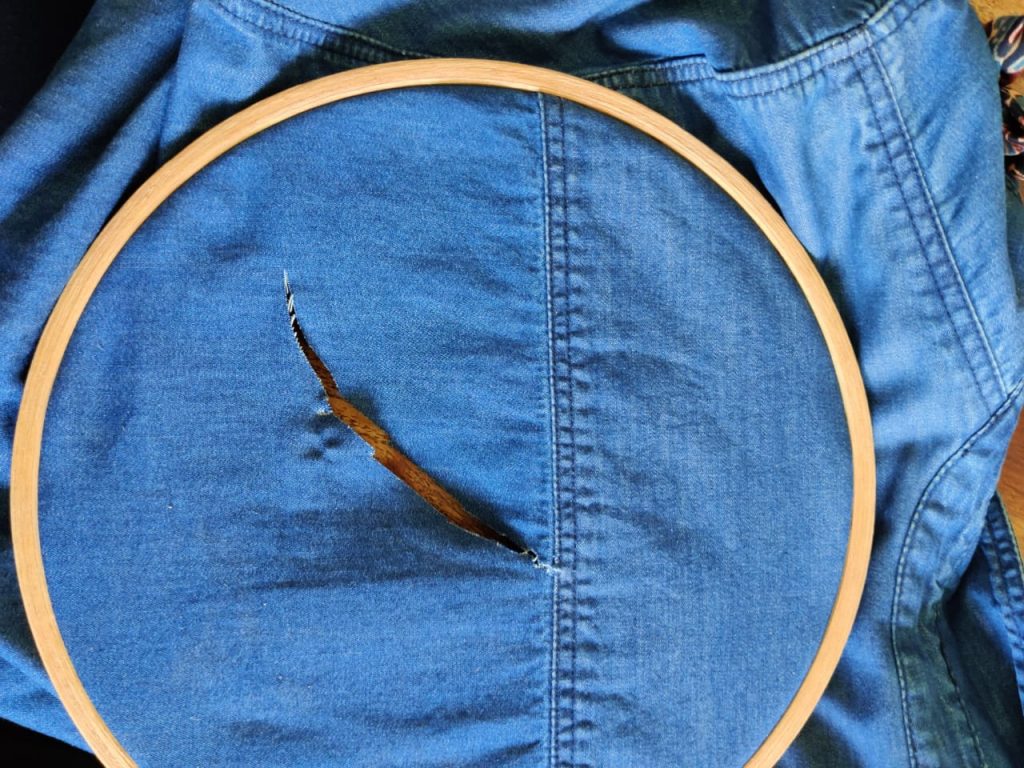
- Tucked the cutout in such that it peeks out the way I liked it to, and secured it with pearl pins. It’s important to pin this patch with the ripped flap of denim, because we want them both to unite and be sewed together neatly. Everything should be flat, and neatly pressed, enough so that this patch is like a part of the shirt, one with it.
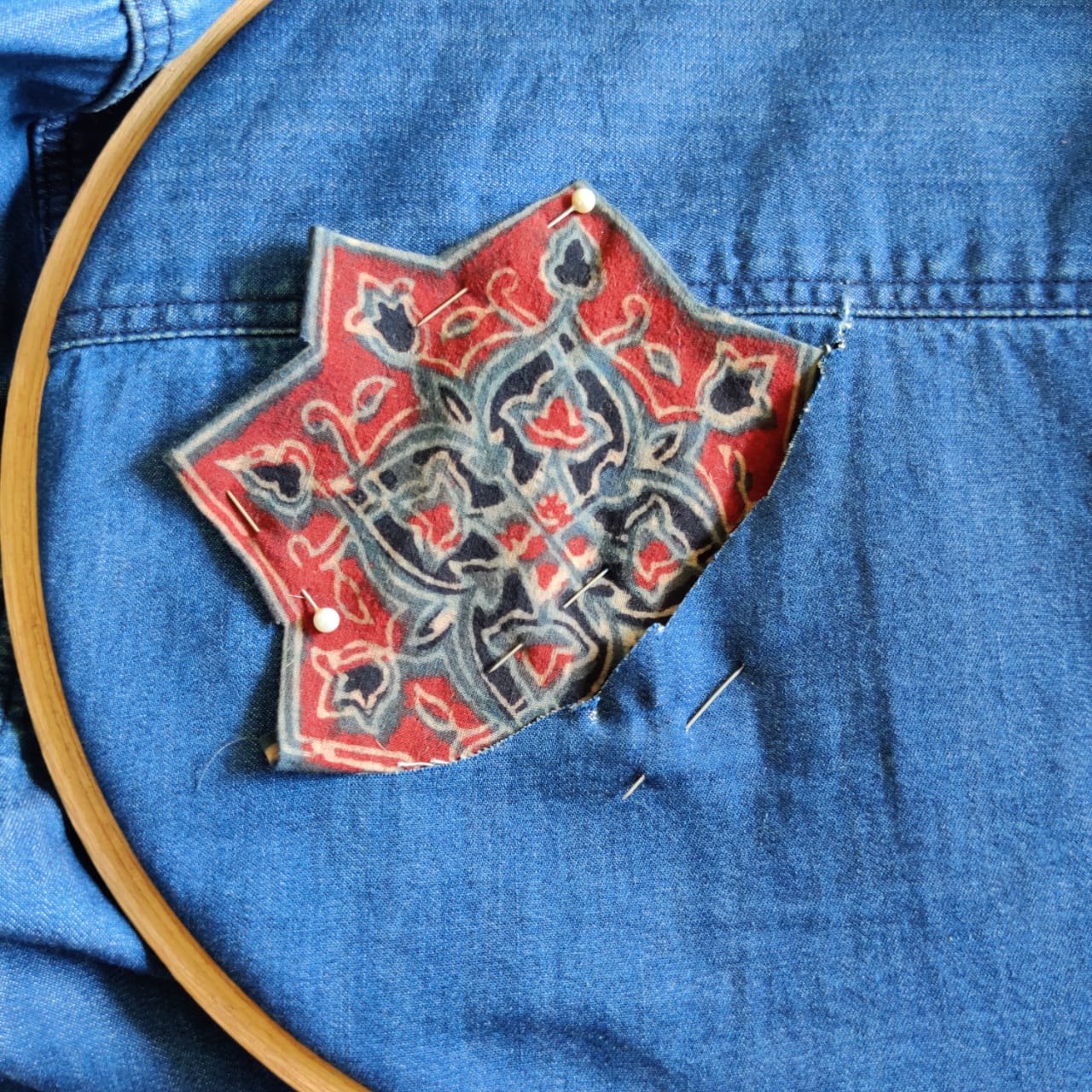
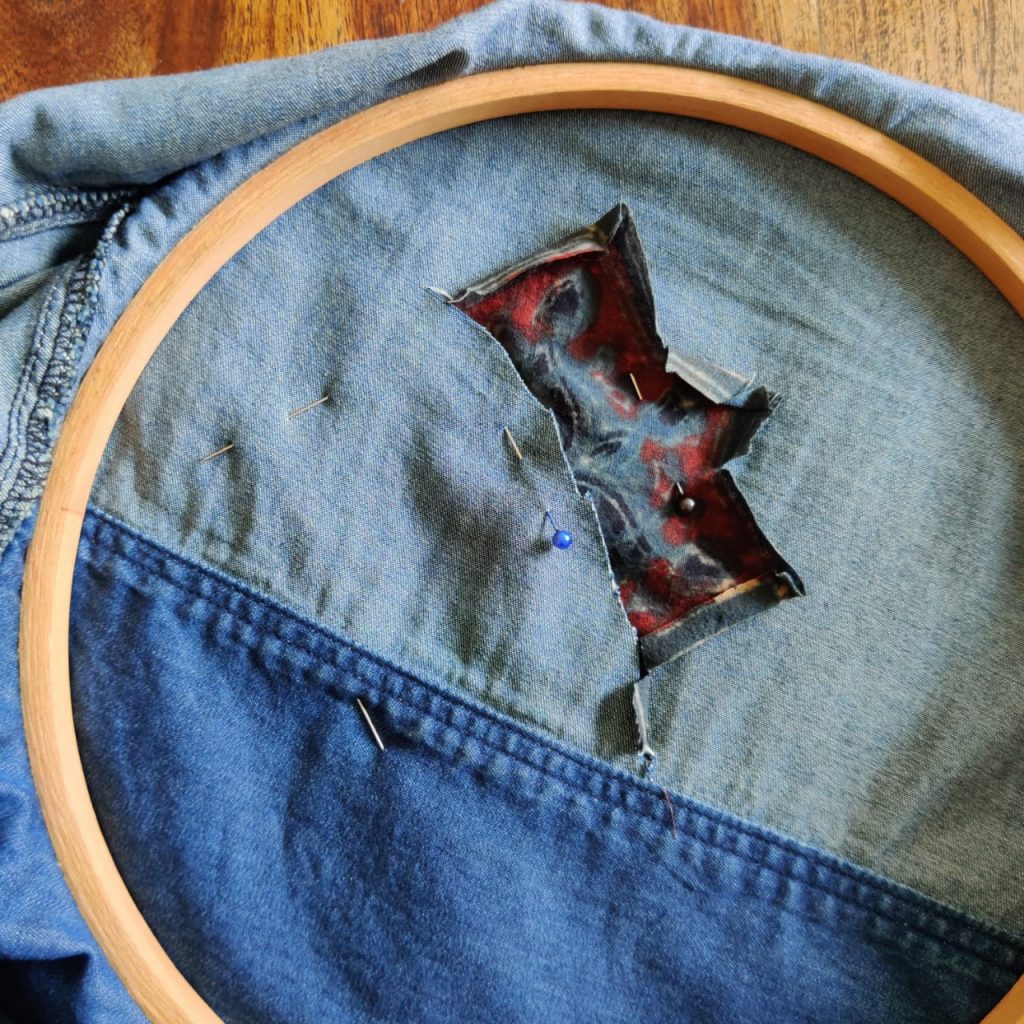
- To secure this on the front, I did some invisible hemming using a dark blue thread. You can watch this video from 2:35 if you don’t know how to appliqué something on with invisible hemming. This was when working on the front facing side, the side that’s visible outside when you wear the shirt.
- For the part of the patch that’s tucked in inside the rip and going behind the shirt, I made tiny, tiny running stitches along the edge (the reverse was facing me while I did this, so I was working on the reverse of the shirt for this step). A single white yarn goes all along the edge. A dainty impression of the whole shape comes on the front. If I wanted this to be invisible, I could use a blue thread the same colour as my shirt. This took a long time, something to be done with patience and love – I did it while binge watching Vampire Diaries. Sigh, Damon.
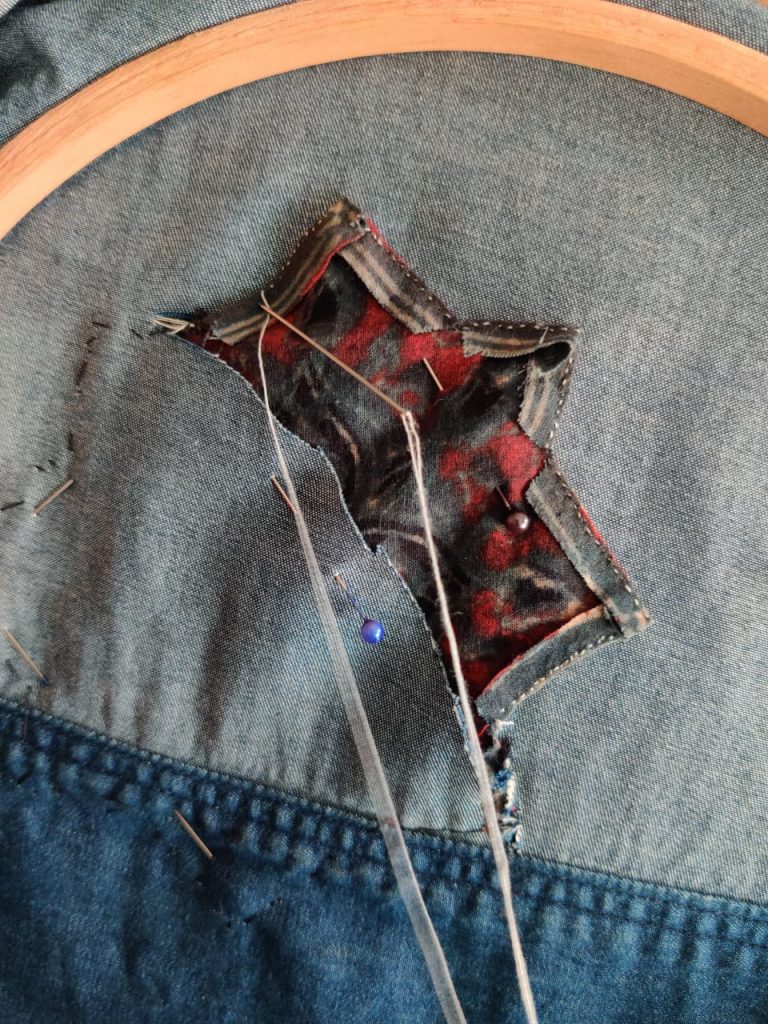
- Now, the functional work is done with, the patch is secure and doesn’t move around. It’s time to decorate it with sashiko stitches. I used two very simple stitches, but one can use absolutely any of the beautiful, symmetrical techniques in the sashiko stitch vocabulary. From the very easy to the very calculative.
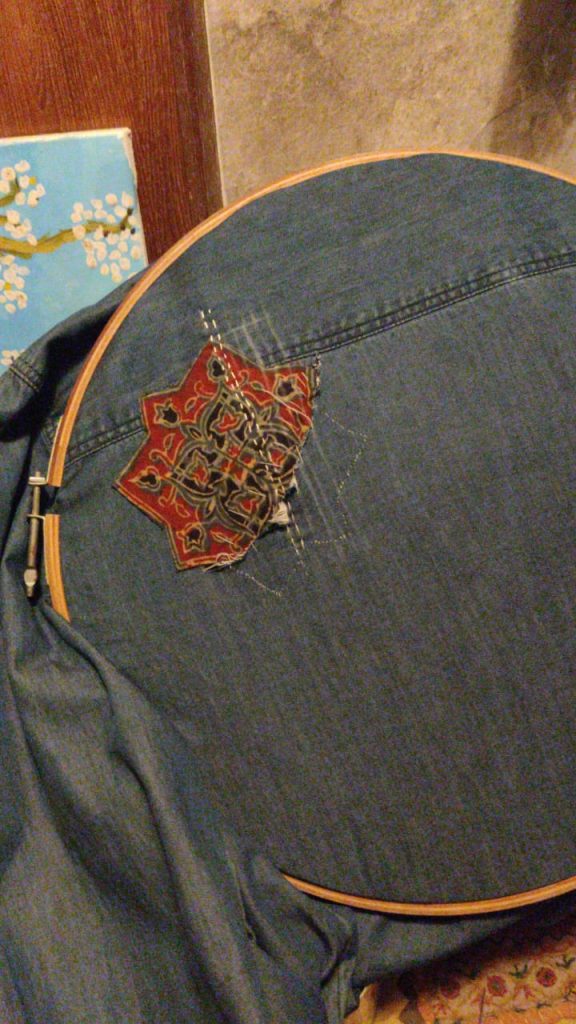
- The “+” signs are satisfyingly quick, you first make vertical rows of running stitches and then “+” them with rows of horizontal running stitches. The other is even simpler – several lines of closely spaced, tiny running stitches pulled taut to create a rippled texture.
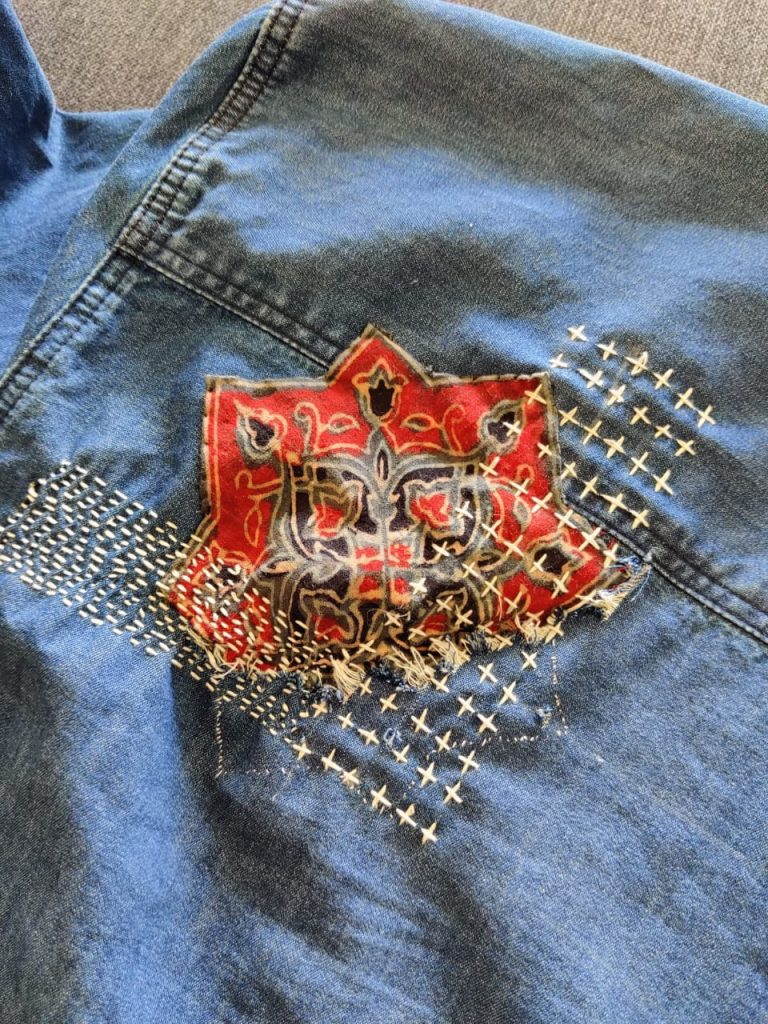
- Make sure that your sashiko stitch placement is sewing together your patch with the fabric of the base (in this case, my denim shirt). The point is that sashiko mending fortifies and holds this all – the patch and the denim – together stronger.
- I did try to make a chalk guide of equidistant straight lines but eventually erased it, it was more distracting than helpful. You only need a guide for your very first line, after that it’s just a matter of concentrating and working your hand such that you make your stitches parallel to the row you made just before. Hand-eye coordination is enough to achieve that, in fact its a nicely meditative brain exercise. Plus, handmade isn’t supposed to be perfect, the sways and irregularities are part of the charm and make it look more organic.
- I like having a pleasing composition, so this was part-planned and part flow. The angles on the Ajrakh motif somehow feel complementary to the sharp right angle of the sashiko placement. But there are no rules, just go with it! The good thing about stitches is they can easily be removed and redone. I removed many rows and redid the whole thing before I was satisfied, but I am an annoying perfectionist so don’t go by my habits. Enjoy the process 🙂
Summing it Up
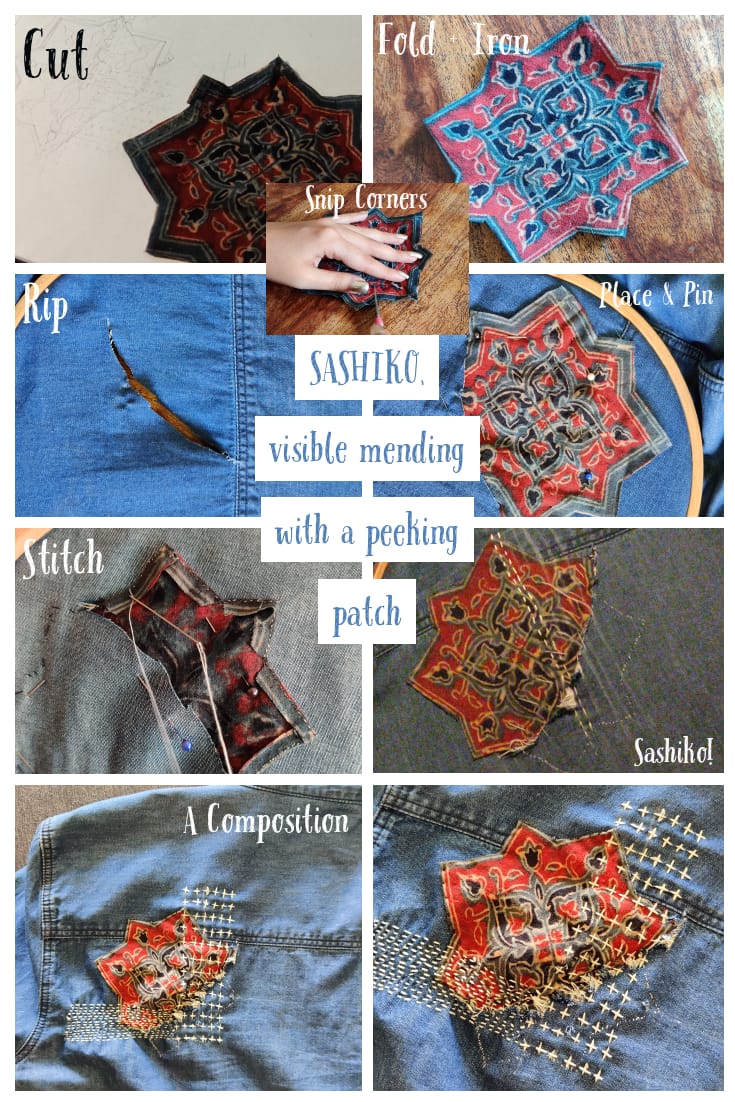
Japanese design philosophy – wabi-sabi, in this case – romances the concept of an object being more beautiful for having gone through difficulty, distress or damage, and to have healed with restoration and repair. The signs of repair are made visible and celebrated as an aesthetic value enhancement, not something to conceal or shame. Sashiko is a technique of visible mend and repair, widely used in ancient Japanese communities to create patchwork garments and increase the longevity of damaged clothing. I think it marries the texture of denim so beautifully, I’d love to create a densely sashiko-ed denim jacket, something I could work on for months and months to create a prized possession!
I’ve mended a few denims with Sashiko embroidery before, and I’ve picked up quite a few techniques from this beautiful visible mending craft. Go here to check out the transformation for a pair of denim jeans that’s my best sashiko till date, too bad they don’t fit me anymore and I donated them to charity!
Should I make videos of the sashiko techniques I do know of? If I have plenty of requests, I’d surely get around to doing it. Let me know in comments!
If you enjoyed this post, do share/pin/repost so more slow fashion enthusiasts can find Revive.Style. I’ll be so grateful!

